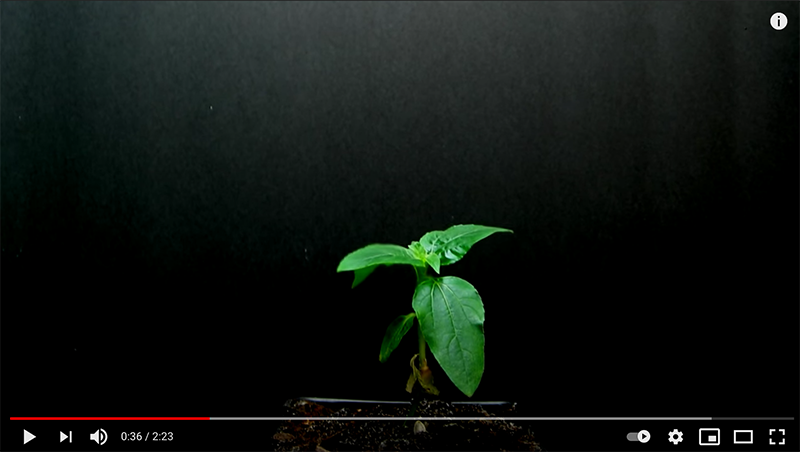Teach This Poem, though developed with a classroom in mind, can be easily adapted for remote learning, hybrid learning models, or in-person classes. Please see our suggestions for how to adapt this lesson for remote or blended learning. We have also noted suggestions when applicable and will continue to add to these suggestions online.
View this time-lapse of a sunflower growing from seed to flower.
The following activities and questions are designed to help your students use their noticing skills to move through the poem and develop their thinking about its meaning with confidence, using what they’ve noticed as evidence for their interpretations. Read more about the framework upon which these activities are based.
-
Warm-up: (Teachers, show the video of the sunflower time-lapse.) Write down some factors that prevent things from growing. What do you notice about the flower? What do you notice about its surroundings?
-
Before Reading the Poem: (Teachers, we suggest projecting this site. Once you select your state, you can show students key facts. Pause after each fact to allow students to jot down their thoughts and reactions.) Jot down your thoughts and reactions for each of the key facts pertaining to your state.
-
Reading the Poem: Read the poem “To Prisoners” by Gwendolyn Brooks silently. What do you notice about the poem? Annotate for any words or phrases that stand out to you or any questions you might have.
-
Listening to the Poem (enlist two volunteers to read the poem aloud): Listen as the poem is read aloud twice, and write down any additional words and phrases that stand out to you.
-
Small-group Discussion:Share what you noticed in the poem with a small group of students. Based on the details you just shared with your small group, how does the poem relate to the facts you viewed at the beginning of class? How does what you noticed about the poem differ from what you noticed about the time-lapse? What does this tell us about how life thrives?
-
Whole-class Discussion: What might the title “To Prisoners” mean? How might the speaker feel about how prisoners are treated? What does the speaker “call for?” Why? How does the poem end?
-
Extension for Grades 7-8: Continue learning more about incarceration in the United States. Read this photo essay and various poems and essays. Create a call to action as a response to incarceration. Your response can be a poem, a photo essay, an essay, a song, a letter to a local representative, etc.
-
Extension for Grades 9-12: Read the essay and poem series “Addressing Mass Incarceration.” Consider extending your research even further by reading the book or watching the movie, Just Mercy. After reading the book or watching the film, write an essay that answers these questions: What does mercy look like? What does it mean to heal?
(Teachers, if you need more information about teaching and mass incarceration, see the two part series from Teaching Tolerance here and here.)
In her introduction to The Essential Gwendolyn Brooks (Library of America, 2005), Elizabeth Alexander writes, “Since she began publishing her tight lyrics of Chicago’s great South Side in the 1940s, Gwendolyn Brooks has been one of the most influential American poets of the twentieth century.” Read the full introduction here.
This week’s poetic term is end-stop, referring to the use of terminal punctuation such as a period, colon, or semicolon at the end of a poetic line. Read more terms.

